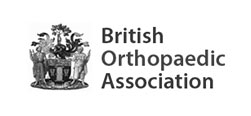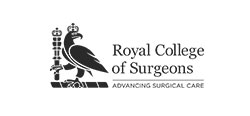Herniated Disc (Cervical)
Herniation of a disc is an anomalous spine condition characterised by leakage of the inner contents of the intervertebral disc, due to cracks in its outer wall. Herniated disc is commonly seen in the cervical or neck region, a condition called cervical herniated disc (CHD). CHD is followed by arm or neck pain that may arise due to compression of the spinal nerves by the protruding disc material. This condition is frequently reported in people between 30-40 years of age as well as elderly people. Treatment of CHD begins with conservative (non-surgical) methods, as reports show that around 90% of patients may return to normal activity by employing these interventions for at least 6 weeks. The patients who are not experiencing benefits from conservative interventions are recommended for surgery.
The cervical region consists of 7 cervical vertebrae (C1-C7), with intervertebral discs between each vertebra that function to provide flexibility to the back bone. Intervertebral discs are soft, compressible structures consisting of a hard-outer ring called the annulus and a gel-like centre, called the nucleus.
Causes and Symptoms
The foremost causes and risk factors involved in the development of cervical herniated disc are advanced age, trauma or injury, abrupt neck movements, smoking and genetic factors. The usual symptoms associated with cervical herniated disc are pain and numbness in the neck, shoulders, chest, arms, and hands, followed by weakness in the associated region.
Diagnosis
The diagnosis of a cervical herniated disc involves studying the medical history and performing a physical examination of the patient. Physical examination may also involve analysis of the neck movements to determine the source of pain and related injured tissues. Furthermore, various new advanced imaging techniques such as MRI scan, myelogram, CT scan, X-rays, electromyography (EMG) and nerve conduction velocity (NCV) tests, are widely used for accurate diagnosis, as confirmatory tests.
Treatment
The well-established non-surgical interventions for CHD include adequate rest, massage of the neck, ice or heat compression, physical therapy, strengthening exercises, chiropractic care, and medications, including epidural steroid injections. In addition, widely accepted holistic therapies such as acupuncture, acupressure, and nutritional supplements are also extensively used.
Surgery is recommended for those patients who are not responding to non-surgical measures. Moreover, numerous other factors such as patient’s age, other medical conditions, previous neck surgeries, and duration of suffering are considered, before making the decision to have surgery. Highly advanced surgical techniques such as anterior cervical discectomy and fusion (ACDF), artificial disc replacement and posterior cervical discectomy, have shown tremendous results and explore a new era of cervical herniated disc treatment. Due to further advancement in technology, discectomy can be performed through minimally invasive techniques that employ a small incision for the operation. These advanced techniques have diminished recovery time, followed by an improved success rate.
The neck is the most flexible part of the spine and supports the weight of the head. The unique anatomical structure of the cervical vertebrae allows free movement of the head. The neck is also composed of muscles and ligaments. Any excessive stress on the ligaments and muscles may injure or damage them.
A sprain is a ligament injury caused by over stretching the ligament beyond its optimal capacity. It may even result in a ligament tear.
A strain refers to damage to the muscle or its tendon when it is stretched beyond its capacity. In severe cases it may even result in a muscle tear.
Some of the most common activities and movements that may cause a stress on the soft tissues of the neck include lack of adequate warm up exercises prior to sports, a fall, awkward position of the neck during sleeping, poor posture and spearing in football. Motor vehicle accidents usually result in severe sprains and strains called whiplash injuries due to sudden unexpected movement of the neck.
What are the symptoms of neck strains and sprains?
A sprain or strain may result in neck pain, which may develop immediately after the injury or may present after a few hours or even days after the injury. The pain is usually intense and pounding in nature with a sudden onset. The pain may also radiate to the shoulder, upper back or arms. It may also be associated with muscle spasms. The affected region may be tender to the touch with localised swelling and stiffness. Even slight movement of the neck can aggravate the pain. In rare cases, it may also result in loss of bowel or bladder function which is a medical emergency.
Whiplash injuries are more severe neck injuries. They usually result in headache, dizziness, jaw pain and a ringing sensation in the ears.
How is it diagnosed?
An accurate diagnosis is crucial for effective treatment of this condition. To arrive at an accurate diagnosis the doctor will inquire about your symptoms, time of their appearance and a history of any treatments employed previously. A medical history, a physical and neurological examination are also essential for diagnosis.
Neurological examination is conducted to identify any signs of neurological injury and involves evaluation of reflexes and muscle weakness. To confirm the diagnosis and to rule out other causes with similar symptoms an X-ray or a CT scan may also be performed. Sometimes, an electromyography may also be ordered if an underlying muscle abnormality is suspected.
What are the treatment options?
Although the pain is excruciating, in a majority of cases non-operative therapies are sufficient. Some of the non-operative therapies include rest, activity modification, medications such as muscle relaxant and intermittent application of ice pack followed by moist heat application. A neck collar may also be recommended for a few weeks to support the neck as well as to prevent any neck movement in order to potentiate healing. Non-steroidal anti-inflammatory drugs or NSAIDs may also be prescribed to reduce the pain and swelling. Physical therapy, chiropractic or acupuncture may also be effective in some cases.
- Click here to read more about Cervical Disc Protrusion and Radiculopathy.
You will need the Adobe Reader to view and print these documents.
![]()




